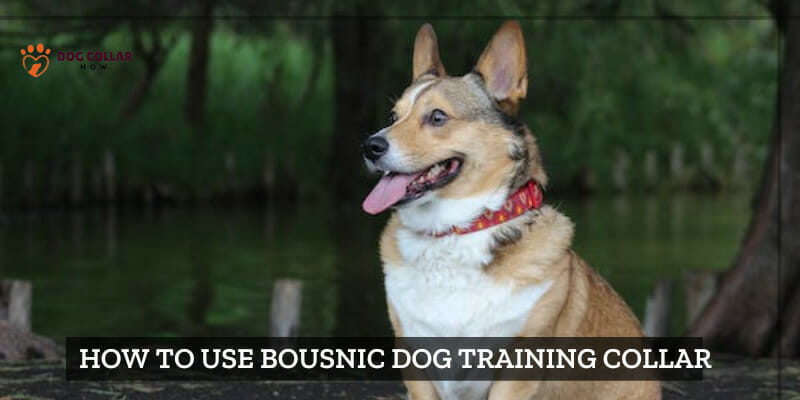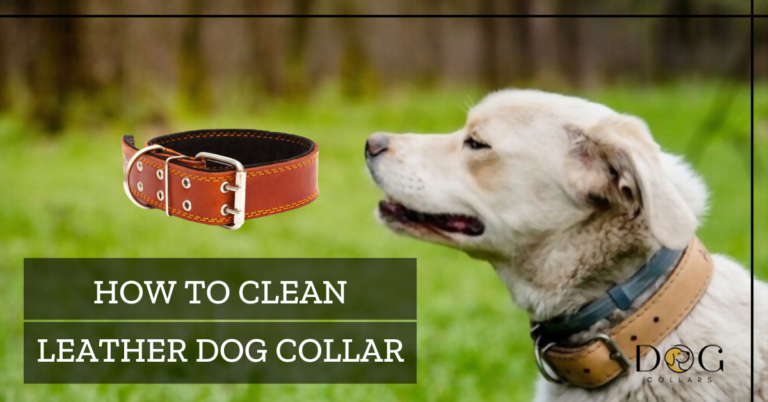How To Use Bousnic Dog Training Collar – 6 Basic Guidelines

As a fellow dog owner, I understand the struggles and frustrations that come with training. But let me tell you, this training collar has been a game-changer in my own experience. With the Bousnic Collar, I witnessed a remarkable shift in my dog’s behavior.
To use the Bousnic Collar, place it around your dog’s neck, adjust the settings on the remote control, and use it to deliver commands or corrections for training purposes. Follow the instructions provided by Bousnic and combine positive reinforcement with the collar for effective training.
From step-by-step instructions to expert tips, we’ll help you unlock your dog’s true potential and create a loving, well-behaved companion for life.
Get ready for a journey of transformation on how to use bousnic dog training collar and discover the joy of effective training!
How to use a bousnic Dog training collar – Step by Step Guide
Using a Bousnic collar can be a game-changer when it comes to refining your furry friend’s actions. But how exactly do you use this innovative tool? Let me walk you through the step-by-step guide.
- Ensure that the collar is charged and ready to go. Once fully charged, attach the receiver to your dog’s neck using an appropriate size. The collar should fit snugly without causing any discomfort.
- Familiarize yourself with the different modes available on the remote control – shock, vibration, and beep. These modes allow you to provide varying levels of correction based on your dog’s response.
- Now comes the important part: testing and adjusting. Start by testing each mode at low intensity to gauge your dog’s reaction. Observe their actions closely and make adjustments accordingly until you find a level that effectively communicates with them without causing distress.
- Once everything is set up and adjusted according to your pet’s needs, it’s time for some real-life practice sessions! Use commands such as “sit” or “stay” while simultaneously activating the appropriate mode on the remote control when needed.
- Remember, consistency is key in training. Reinforce positive habits by rewarding your pup with praise or treats whenever they respond correctly to commands while using the collar. This will help reinforce the desired reaction over time.
- With patience and persistence, using a Bousnic collar can transform both your and your four-legged companion’s lives for the better!
So there you have it – a simple yet effective step-by-step guide on using a training collar! Give it a try and watch as your furry friend becomes more well-behaved and obedient during walks or at home.
Find the Best bousnic shock collar?
Tell us your dog’s breed and neck size, and we’ll help you find the best boousnic shock collar on Amazon!
Different Types Of Bousnic Dog Training Collars
Different types of bousnic training collars offer a range of options to address different attitude issues in their furry friends.
Shock Collar – A Gentle Jolt to Reinforce Good Habits
The first type is the shock collar, which delivers mild electric stimulation to get your dog’s attention and discourage unwanted reaction like excessive barking or jumping. This type of collar has adjustable levels of intensity, allowing you to find the right balance for your dog.
Tone Collar – Beeps of Communication for Effective Training
This type of collar emits a beep sound as a warning signal instead of using electric stimulation. This can be an effective way to train your dog without any discomfort or pain. It works by associating the sound with a command so that your furry friend learns what is expected from them.
Vibration Mode – Subtle Sensations for Sensitive Souls
There are also collars with vibration mode, which provides gentle vibrations instead of shocks or sounds. This can be particularly useful for dogs who are more sensitive or reactive to physical stimuli.
All-in-One Powerhouse – The Collar with Multiple Mode
Some dog training collar with remote come with multiple modes, combining features like shock, tone, electric fence, and vibration in one device. These versatile collars give you more flexibility in choosing the most appropriate method for each specific situation.
Remember that it’s important to choose the right type of collar based on your dog’s size and temperament. Always read the instructions carefully before using any training tool and consult with a professional if needed.
Pros and cons of bousnic dog Shock collars
Pros of Bousnic Dog Shock Collar
Versatility
Bousnic collars come in different sizes, making them suitable for dogs of all sizes. Adjustable contact points ensure a comfortable fit.
Waterproof Design
These collars are designed to withstand water, allowing your dog to enjoy outdoor activities without worrying about damage.
Multiple Modes
Bousnic collars offer various operations such as vibration, shock stimulation, beep, and light functions, providing options for effective behavior correction.
Cons of Bousnic Dog Shock Collar
Potential for Misuse
It’s important to use these collars responsibly and follow the manufacturer’s instructions to prevent any potential harm to the dog.
Criticisms of Shock Stimulation
Some people argue that shock stimuli can be cruel or harmful if not used properly. Consulting with professional trainers can help ensure the appropriate and humane use of the collar.
Battery Life
Depending on usage, the battery life of the collar may vary. While longer battery life can be advantageous, frequent charging may be required for intensive training sessions.
In summary, Training Collars offer versatility, a waterproof design, and multiple options for effective training. However, responsible use, addressing criticisms, and considering battery life are important factors to keep in mind when using these collars
Will The Remote Work Through Walls And Windows?
Pet owners often worry about whether a training collar’s remote will work effectively through walls and windows. It’s important to be able to control our furry friends even when they’re indoors or behind barriers.
The good news is that dog training collars are designed with advanced technology that lets the remote transmit signals through obstacles like walls and windows.
So, you can still communicate with your dog and correct their behavior, even if they’re on the other side of a closed door or window. Just keep in mind that signal strength and range can be affected by factors such as thick walls or metal structures.
It’s a good idea to test the range in different areas of your home to understand any limitations. With Bousnic training collars, you can confidently train your pup, knowing you can reach them even from afar.
Why Does Your Dog Excessively Bark?
Excessive barking can be a common problem for many pet owners. There are several reasons why dogs bark excessively. It’s important to understand these underlying causes in order to effectively address the issue.
Boredom Blitz
Picture this: your four-legged friend is twiddling their paws with nothing exciting to do. A bored dog is like a ticking time bomb of barks, ready to explode. They need mental stimulation and physical exercise to keep their tails wagging instead of becoming the bark-aholics of the neighborhood.
Anxiety Anthem
Some dogs have been through ruff times, leaving them with anxiety or fear. Maybe they missed out on crucial socializing, or past experiences left them feeling like they’re living in a never-ending episode of “Scaredy Dog.” Excessive barking becomes their protective shield, a way to fend off what they perceive as threats.
Separation Serenade
Canine companions are social creatures, and being left alone for extended periods can unleash a symphony of barks. Separation anxiety turns your sweet pup into a maestro of noise, expressing their distress at being apart from their beloved humans.
Medical Melodies
Sometimes, barking isn’t just a behavioral quirk but a cry for help. Hidden beneath the woofs could be an underlying medical issue causing discomfort. Just like we’d groan if we had a sore leg or tummy ache, our furry friends might vocalize their pain through excessive barking.
It’s important for dog owners to identify the root cause of their pet’s excessive barking in order to address it appropriately. Positive reinforcement training techniques combined with addressing any underlying issues can help reduce unwanted barking habits over time.
Conclusion
In conclusion, using a bousnic training collar can enhance your training efforts and improve communication with your dog. Choose the right collar for your dog, follow instructions, and use it responsibly. With consistency and positive reinforcement, you can achieve successful training outcomes and strengthen your bond with your furry companion.
FAQs
What are the settings on a Bousnic collar?
Bousnic collars typically have adjustable settings that include option like shock, vibration, tone, and light. The specific settings may vary depending on the model.
How do you start a dog training collar?
To start dog training, you usually need to turn on both the remote control and the collar receiver. Follow the manufacturer’s instructions for your specific collar model to ensure proper activation.
How do you use a dog training collar?
Using a trainer collar involves fitting the collar securely around your dog’s neck, selecting the appropriate training operations, and delivering consistent and clear instructions. It’s important to follow the instructions provided by the manufacturer and consult with professional trainers if needed.
When should you start using a training collar on a dog?
The timing for using a collar training on a dog depends on various factors, including the dog’s age, temperament, and training needs. It’s generally recommended to start using a training collar after basic obedience guidance have been established and the dog has developed a good understanding of the desired attitude.
Can dogs sleep in training collars?
It is generally recommended to remove training collars, including shock collars, before allowing a dog to sleep. Collars with metal prongs or electronic components can be uncomfortable and pose a safety risk while the dog is resting or sleeping.
Is it OK to walk a dog with a collar?
Walking a dog with a collar is common and acceptable. Proper fit and comfort are important. Some dogs may need harnesses for specific reasons.






